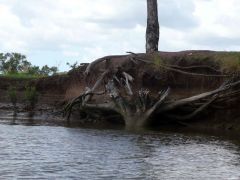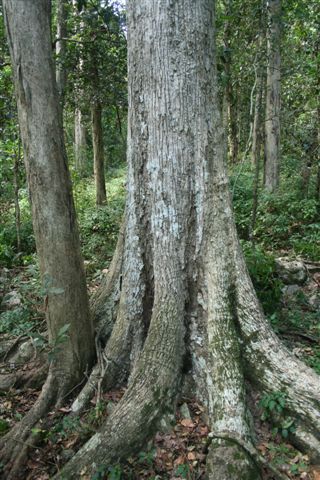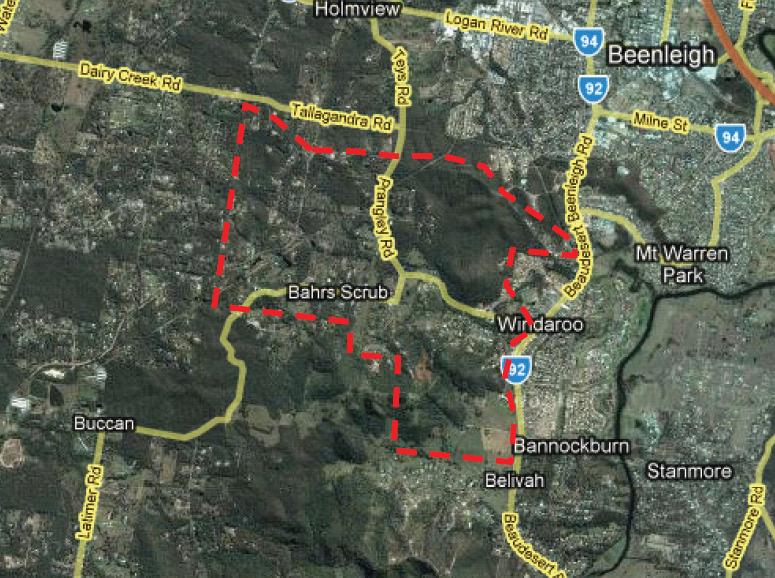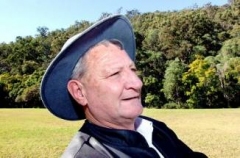
Logan and Albert Conservation Association


Following the release on Wednesday November 20 of the Healthy Waterways Ecosystem Health Report, in which the Albert and Logan Rivers each received fails for the second year in a row, general agreement has emerged within LACA and among other conservation groups across the region that the situation for this river/bay system is now critical and requires urgent new attention, NOT business as usual.
Continuation alone of the strategies put in place by SEQ Catchments and Healthy Waterways and responsible NRMs clearly will not provide the genuine on the ground, full system solutions that are now desperately needed. Their strategies, while clearly aimed at long term outcomes, have nevertheless been in place for ten years during which the rivers and bay areas in SE Qld have steadily declined, with the Logan/Albert/Southern Bay the worst performing system in
The need for a ‘Crisis
LACA members and others have expressed the view that urgent action is needed at a government/legislative level. To explore this and hopefully arrive at a collective decision, a ‘crisis summit’ on the rivers and bay has been proposed, to be held possibly in February 2011. As a ‘summit’ this will differ from the Logan City Council proposal for a ‘forum’. While a ‘forum’ usually involves open community access and input of ideas ending in a summary report, a ‘summit’ involves the key players and decision makers in a process of dialogue and collective decision making for action. However, the summit could take on board the information that might flow out of an earlier ‘forum’, so the two proposals are not necessarily mutually exclusive.
This issue encompasses the whole catchment area of the Logan and Albert Rivers, and as such includes the impacts on the system of major new development proposals including those at Flagstone, Yarrabilba, Bahrs Scrub and Bromelton. Accordingly, a ‘crisis summit’ would involve key decision makers from Federal, State and local government, landholders groups, Agforce, conservation groups, developers in the region, river based industry groups such as prawn farmers, tourism and amateur and professional fishing organisations. The starting point for the crisis summit should be the collective understanding that there is a ‘crisis’ in this system and that genuine new actions, possibly involving legislation, are needed in order to prevent the ecological and physical collapse of the river/bay system.
Biod iversity is at the very heart of the survival of our human race and life on earth as we know it now. What we also know is that our present day activities and ways of living are having an enormous and detrimental impact on the planat and all of its species.
iversity is at the very heart of the survival of our human race and life on earth as we know it now. What we also know is that our present day activities and ways of living are having an enormous and detrimental impact on the planat and all of its species.
We all need each other to survive - yet we continue to whittle away at little bits - without being able to see the bigger picture.
Some plants within BAHRS SCRUB are unique - existing no where else in the world. Yet these plants are dependant on all surrounding pieces of biodiversity infrastructure. All eleven plants identified in the booklet are recognised as being endangered by Queensland or Australian governments. Will these plants survive in their natural environment? Or will we clear the busland for human settlement?
How much do you value the bushland and its creatures and what they contribute to our cultural life health and well being?
Are you someone who believes it is still necessary for economic prosperity that we continue to destroy our bushland. Only 200 years of western 'progress' may not always be viewed as progress?
LACA is one of the member groups of the SAVE BAHRS SCRUB ALLIANCE. We are all appreciative that our application for funding for this flora booklet was successful with Logan City Council's Envirogrant 2010 program.
Please obtain a copy of the booklet - read and enjoy the beauty of what is uniquely ours in Logan - and look out for the LOCAL AREA PLAN due to be released Monday 8 November 2010 for community consultation. Please involve yourself in this consultation process.
Click here or on the image to be download a cpoy of the booklet from the Save Bahrs Scub Alliance website.
More will be posted when the plan is available

KOREN HELBIG reporter from Albert and Logan News www.albertlogannews.com.au published our concerns in 25 November 2009 edition. She also provided an opportunity for Logan City Council to comment. Copy here  alb005.pdf
alb005.pdf
A NEW group lobbying against a large housing development planned for Bahrs Scrub has likened the Logan City Council proposal to the Traveston Dam debacle. Save Bahrs Scrub spokeswoman Petrina Maizey said thousands of ratepayer dollars would be wasted on preliminary studies and impact statements needed to assess the 4000-lot development's viability.
She said such studies would prove that the 510ha zone bordered by Wuraga and Sharton Roads was environmentally significant and that ‘‘exceptional'' flora and fauna must be protected.
‘‘Ratepayers' money will have to be used by the council only to find what our preliminary investigations and other studies have already made abundantly clear - hat this development is not viable physically, environmentally or economically on 70 to 80 per cent of the selected site,'' Ms Maizey said.
The black plum of Bahrs Scrub Pouteria Eerwah is listed as a federally endangered plant. In another area of Logan we have another plant commonly called Veresdale Plum - also Pouteria Eerwah and LACA, Logan and Albert Conservation Association, has established a recovery and management plan for that species.
 Can we save Bahrs Scrub?
Can we save Bahrs Scrub?
A presentation to Hon Peter Garrett, Minister for Environment, Heritage, and the Arts, with particular reference to the draft National Biodiversity Strategy was made by two of our Bahrs Scrub concerned citizens. The presentation was made by Petrina Maizey and Glen Leiper during the federal community cabinet meeting held at Beenleigh in the Forde electorate.
Bahrs Scrub has unfortunately been shuffled around and between local government areas. This happened when Logan was established as a new city and recently when our state government decided to amalgamate local councils. As a result of this Bahrs Scrub moved from the jurisdiction of the Albert Shire to become an outreach of Gold Coast Shire. Then as a reult of amalgamation this same area is an outreach of Logan City Council.
Bahrs Scrub has always been on the outskirts of the local authority boundary. Gecko - Gold Coast and Hinterland Environment Council has been actively engaged in monitoring and protecting this area and working with Gold Coast city council for many years. The area nows falls within the catchment of LACA - Logan and Albert Conservation Association as we endeavour to work with Logan City Council to achieve, we hope, best long term environmental outcomes.
Why the urgent need for this presentation and our 'campaign'?
Logan City has been targeted as an area for future development by state govenment's SEQRP or South East Queensland Regional Plan. People are rushing to SEQ and councils have been directed by state government to provide 'affordable housing' for these people. In Logan there are 8 such areas - all of which require Local Area Plans and innumerable manhours - funded by us to create our future.
This article makes use of the major points presented in the presentation - and will be followed by more. If you are interested in protecting the environmental values present in Bahrs Scrub Precinct and would like to be involved please contact us at bahrsscrub at laca.org.au or use the form on the contact page.
 Environmentalists and concerned citizens are dismayed at lack of foresight by state government and local councils which blindly accept SEQRP urban footprint proposals.
Environmentalists and concerned citizens are dismayed at lack of foresight by state government and local councils which blindly accept SEQRP urban footprint proposals.
Ted Fensom, pictured aside, has been campaigning, and continues to campaign to assist local communities to protect what remains of open space, natural habitats and bioregional corridors, good quality agricultural lands, wetlands and riverine vegetation. Many of our rare and threatened fauna species depend of these patches of disconnected fragmented bushlands.
Glenn Leiper's presentation at the community meeting held at Windaroo Valley high school 5 November 2009 highlighted the rare and threatened and newly discovered plant species that are part of Bahrs Scrub biodiversity. Information about these rare flora will be added soon.
Albert and Logan news reported our concerns in July this year. Story is repeated here.
 ALBERT AND LOGAN NEWS, WEDNESDAY, NOVEMBER 4, 2009 page 13 article reads as follows
ALBERT AND LOGAN NEWS, WEDNESDAY, NOVEMBER 4, 2009 page 13 article reads as follows
Activists combine to ban houses [at Bahrs Scrub]FOUR conservation groups are joining forces to fight a 4000-lot housing development proposed for sensitive bushland at Bahrs Scrub.
Spokeswoman Petrina Maizey said the Logan City Council plan to allow 10,000 more people into a 510ha zone bordered by Wuraga and Sharton roads was
''irresponsible''.
She said the area housed endangered wildlife and flora and was unsuitable for development as it had serious soil and slope stability problems.
 As Logan City Council explained on their website the South East Queensland Regional Plan 2009-2031 has identified the Bahrs Scrub locality as a Local Development Area. Council residents and land owners had an opportunity to input into the SEQRP and the area of Bahrs Schub has been selected by state government and targeted or 'identified' as an area to be developed for urban purposes and in doing so help Council achieve the dwelling targets allocated to it in the regional plan. It is not council that set those targets - but state government which is heading down the path towards bigger population targets for SEQ - and Logan City Council is very supportive of the state's targets.
As Logan City Council explained on their website the South East Queensland Regional Plan 2009-2031 has identified the Bahrs Scrub locality as a Local Development Area. Council residents and land owners had an opportunity to input into the SEQRP and the area of Bahrs Schub has been selected by state government and targeted or 'identified' as an area to be developed for urban purposes and in doing so help Council achieve the dwelling targets allocated to it in the regional plan. It is not council that set those targets - but state government which is heading down the path towards bigger population targets for SEQ - and Logan City Council is very supportive of the state's targets.
Council must now prepare a more detailed Local Development Area Plan for this locality. This plan will identify those areas suitable for urban purposes and those areas required to be conserved or managed for a variety of purposes.
The plan will also identify the range of necessary infrastructure needed to support development of this locality.
Council has now commenced this plan making process. The final plan and its statutory components will then need to be integrated into Council's planning scheme.
Council is currently in the initial scoping stage. This stage is intended to identify the range of issues that need to be addressed during the plan making process. As part of this process Council is consulting with a range of stakeholders, including State Government Agencies and landowners as to what they see as the significant issues for developing this locality. These issues will then be feed into consultancies briefs for further studies to be undertaken. The outputs of these studies will then be used to formulate a range of land use options that can then be further tested and refined.
The big questions to be asked here are - what are the benchmarks for sustainable development?